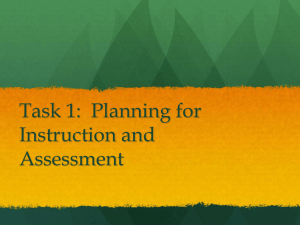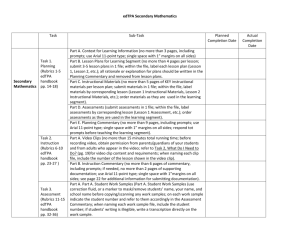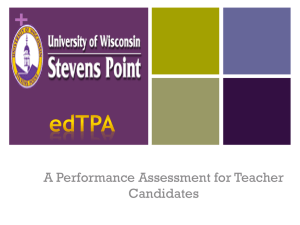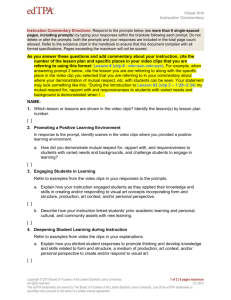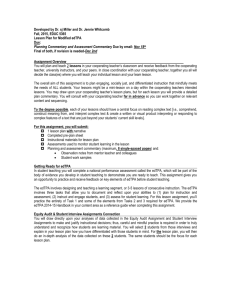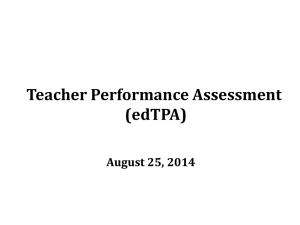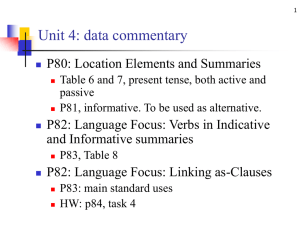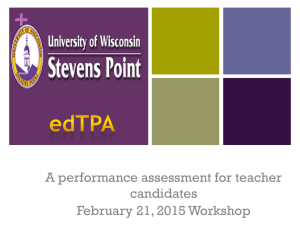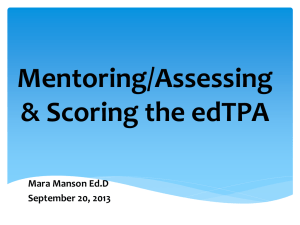Comparison of School and KSU Assessment of Teachers
advertisement
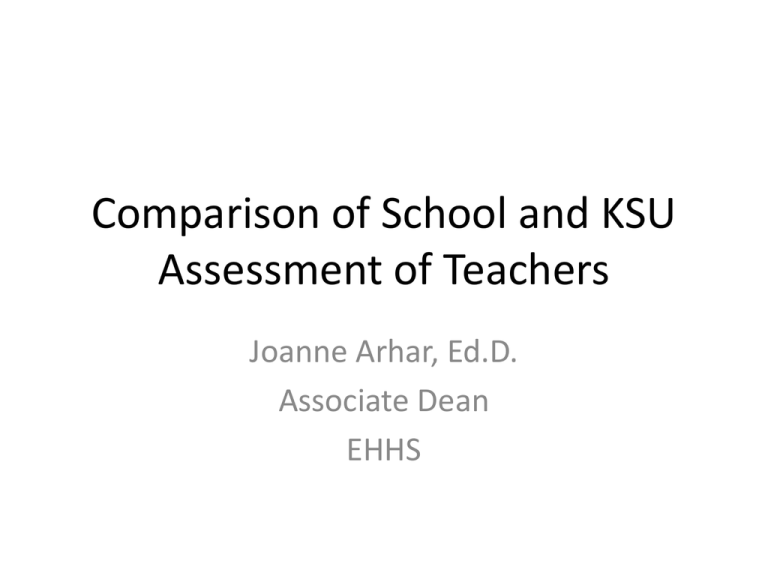
Comparison of School and KSU Assessment of Teachers Joanne Arhar, Ed.D. Associate Dean EHHS Comparison of KSU Teacher Candidate Evaluation System with Ohio Teacher Evaluation System KSU Student Teacher Evaluation Ohio Teacher Evaluation System System (OTES) Educator Teacher Performance Student Growth Measures (50%) Assessment (edTPA) Disposition Assessment Student Teaching Evaluation Teacher Performance (50%) How Grade is Determined for Student Teaching Grading is S/U. To earn an S, the following criteria must be met: 1. Score of 80% or higher on Summative Student Teaching Assessment with no items rated as “Unmet”. 2. Any Professional Disposition Plans assigned for Needs Improvement on the Disposition Assessment are satisfactorily completed. edTPA and OTES: Teacher Performance edTPA OTES: Teacher Performance (50%) Planning for content, student learning, assessment Instruction (video clips)/Learning Environment Assessment Content Analysis of Teaching Pre-Post Conference Meeting with Supervisor Content Academic Language (video clips) Instruction/ Learning Environment Assessment Student Teaching Evaluation additionally includes: Collaboration/Communication Collaboration/Communication Professional Responsibility/Growth Professional Responsibility/Growth Measuring Student Growth Ohio Board of Regents: OTES: Student Growth Educator Performance Report Measures (50%) Value added scores of beginning teachers reported to KSU. Not an evaluation of a student teacher but an evaluation of a teacher preparation program. Value Added Approved Vendor Assessments Locally Determined Measures: Student Learning Objectives Comparison of edTPA and RESA edTPA Task What to submit (Artifacts) 15 Rubrics Planning Lesson Plans, Instructional Materials, Student Assignments, Assessments, Planning Commentary Instruction Unedited Video Clips, Instruction Commentary Planning for Content Understandings, Supporting Students’ Learning Needs, Planning Assessment to Monitor Student Learning Demonstrating a Positive and Engaging Learning Environment, Engaging Students in Learning, Deepening Learning During Instruction, SubjectSpecific Pedagogy Assessment Samples of Student Work, Summary of Student Learning, Assessment Commentary Analyzing Student Learning, Providing Feedback to Guide Learning, Supporting Students’ Use of Feedback Analysis of Teaching Planning Commentary, Instruction Commentary, Assessment Commentary Using Knowledge of Students to Inform Planning, Analyzing Teaching, Using Assessment to Inform Instruction Academic Language Unedited Video Clips and/ or Student Work Samples, Planning and Assessment Commentaries Identifying and Supporting Language Demands, Evidence of Language Use to Support Content Understandings RESA Task What to submit (evidence) Rubrics Lesson Cycle #1 Plan and implement a lesson Formative and Summative Assessment Description of students, lesson overview, videotape, commentary, instructional evidence, analysis and self-reflection. Lesson plan and commentary, instructional outcomes, lesson segment and commentary, general lesson reflection. Teaching and learning, instructional cycle context, assessment plan, focal student selection rationale, focal student responses to formative assessment, formative and summative assessment samples, analysis of student progress, evidence of feedback. Lesson Cycle #2 Teaching and learning context, lesson overview and commentary, instructional evidence, instructional strategies overview. Selecting assessments to monitor student learning, designing assessments aligned to academically rigorous learning expectations, using formative assessments to modify instruction, analyzing student data to monitor achievement, providing quality feedback to students. Lesson plan and commentary, lesson segment and commentary, general lesson reflection. Communication and Professional Growth Examples of communication with parents/caregivers, example of communication and collaboration with colleagues, rationale for professional collaboration, professional development and growth. Teaching and learning context, reflection on practice and feedback. Reflection on teaching practice based on feedback from students and/or colleagues Communicating with families, collaborating with colleagues, growing and developing professionally. Rubric not used; instead, it will be scored for responsiveness to the questions in the Reflection on Practice and Feedback Form. Comparison of edTPA and RESA Performance-based assessments that call for teachers to demonstrate their ability to design and implement instruction that is responsive to diverse needs of students, use formative and summative assessments to inform teaching practice, and reflect on their teaching. – – – – – – based on the Ohio Standards for the Teaching Profession require the use of portfolios require the use of academic language use videotaping use rubrics to assess the teacher’s submissions use trained, outside assessors

